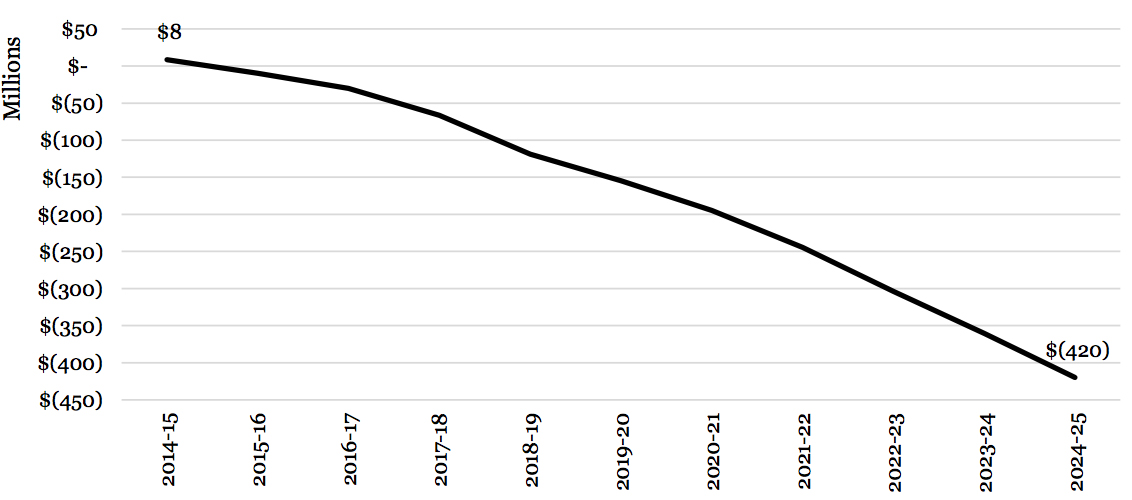“Colleges woefully underfunded and over managed,” says OPSEU president
A new report by PricewaterhouseCoopers for Colleges Ontario said that the college system in Ontario is projected to have an operating deficit of $420 million a year and a cumulative debt of $1.9 billion by 2024-25.
The report said that to deal with this looming financial crisis the college sector will need to cut staffing levels by 13 per cent, hike tuition fees by 6.2 per cent a year and increase government funding by 2.3 per cent more than projected. Enrolment of international students in Ontario colleges would also need to jump by 7.1 per cent each year to cover the shortfall.
Warren Thomas, president of Ontario Public Service Employees Union (OPSEU), which represents college staff and faculty across the province, said the government needs to invest more money into colleges and that those funds should go to support front-line faculty.
“Colleges are woefully underfunded and over managed,” said Thomas. “It would be more efficient to cut management positions, rather than the people doing the teaching.”
Thomas said that the shift from full-time to part-time work at the colleges is worrisome. He said that when full-time positions are cut, part-time workers don’t have an incentive to stay, which results in high turnover rates.
“Full time and permanent jobs are far more superior and cost effective in the long run, because it gives that consistency and continuity that betters the experience all around,” said Thomas.
The report also warns that the costs of increasing the proportion of part-time staff could outweigh the benefits.
The report notes that the increase in international students is driving the growth in tuition revenues as the average international student tuition is $12,286 compared to $3,249 for domestic students.
The provincial government does not regulate international student tuition fees. In fact, Ontario colleges ultimately determine their own fees.
Linda Franklin, president and CEO of Colleges Ontario, said increasing international student enrolment, which the report said has increased 258 per cent since 2008-09, is not a viable solution on it’s own.
“Canadian credentials are very sought after by international students making Canadian colleges a very attractive destination,” said Franklin. “There are only so many international students colleges can enrol.”
The report said 24,488 international students enrolled in central colleges in 2014-15. According to George Brown College’s (GBC) 2015-16 annual report, they make up 15 per cent of the 32,000 students at the school.
“Colleges are supposed to be a public service, but they’ve become more like businesses,” said Thomas.
Franklin said that central colleges, like GBC, are at least briefly better off than the their northern counterparts.
“Central colleges have more access to international students, because they tend to congregate in urban centres,” said Franklin. “As soon as you get to smaller centres like Georgian College, they see real challenges due to their smaller scale.”
Thomas said that international students are already paying a premium and that, if colleges want to recruit more international students, they must show that they’re getting the best educational experience possible.
“We have to make sure it’s a good environment for both the international students and domestic students,” said Franklin. “Values around that sense of globalization must drive enrolment.”
At a GBC board of governors meeting on Feb. 8, Martha Tory reported that GBC is currently projecting a $5.4 million surplus for the year.


